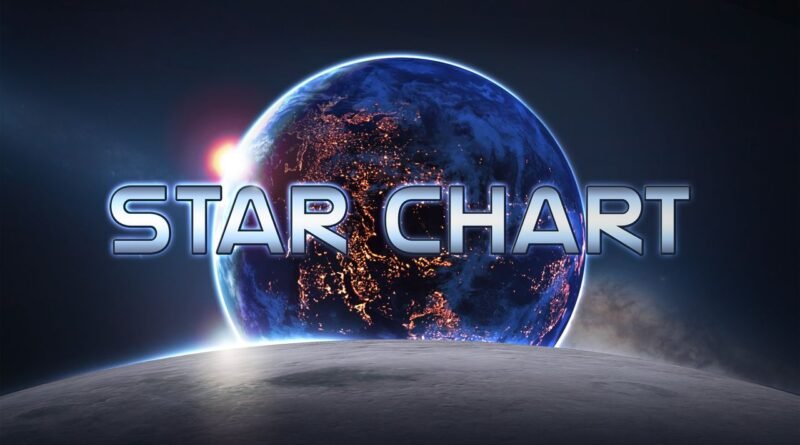Starchart: Navigating the Cosmic Wonders
Starchart: Navigating the Cosmic Wonders Starcharts, also known as star maps or celestial maps, have been instrumental in guiding humanity’s understanding of the cosmos for centuries. These intricate diagrams serve as visual representations of the night sky, mapping out the positions and movements of celestial bodies such as stars, planets, and constellations. From ancient civilizations to modern astronomers, the allure of starcharts transcends time, offering a glimpse into the vast expanse of the universe. In this article, we delve into the world of starcharts, exploring their history, significance, and contemporary relevance in the realm of astronomy.
History and Origins of Starcharts
The origins of starcharts can be traced back to ancient civilizations such as the Babylonians, Greeks, and Egyptians, who meticulously recorded celestial observations for various purposes, including timekeeping, navigation, and astrology. One of the earliest known starcharts dates back to the 2nd millennium BCE, found on the ceiling of the tomb of Senenmut, an ancient Egyptian astronomer.
Importance of Starcharts in Astronomy
Starcharts play a crucial role in astronomy by providing astronomers with valuable insights into the structure and dynamics of the universe. By plotting the positions of celestial objects on a two-dimensional plane, astronomers can study their movements, patterns, and relationships over time, facilitating observations, calculations, and discoveries.
Celestial Starcharts
Celestial starcharts depict the arrangement of stars and celestial objects as observed from Earth’s vantage point. They come in various forms, including digital simulations and physical prints, each offering unique advantages for astronomers and stargazers alike.
Digital vs. Physical Celestial Starcharts
Digital celestial starcharts leverage advanced computer software and databases to generate interactive maps of the night sky, allowing users to customize their viewing experience by adjusting parameters such as time, location, and magnification. On the other hand, physical celestial starcharts, such as star atlases and planispheres, offer a tangible and portable means of navigating the heavens, making them popular among amateur astronomers and enthusiasts.
Terrestrial Starcharts
Terrestrial starcharts, also known as navigational charts or maps, are used for navigation and exploration on Earth’s surface. These charts depict geographical features, landmarks, and navigational aids to help sailors, pilots, and travelers navigate safely across land and sea.
How to Read a Starchart
Reading a starchart requires a basic understanding of celestial coordinates, constellations, and reference points. Most starcharts use a grid system to divide the celestial sphere into manageable sections, with each grid square representing a specific area of the sky. By identifying key landmarks and constellations, observers can navigate the starchart and locate celestial objects with precision.
Tools and Technology Behind Starcharts
Advancements in technology have revolutionized the way starcharts are created, analyzed, and utilized in modern astronomy. From computerized telescopes and imaging software to satellite-based navigation systems, astronomers have access to a wide range of tools and technologies to enhance their understanding of the cosmos.
Starcharts in Modern Astronomy
In modern astronomy, starcharts serve as invaluable resources for observational astronomy, astrophotography, and space exploration. Astronomical surveys such as the Sloan Digital Sky Survey (SDSS) and the Gaia mission have generated vast databases of celestial data, which are used to create high-resolution starcharts and 3D maps of the universe.
Cultural Significance of Starcharts
Beyond their scientific utility, starcharts hold cultural significance as symbols of human curiosity, ingenuity, and exploration. Throughout history, different cultures have interpreted the stars in various ways, weaving them into myths, legends, and religious beliefs that continue to resonate today.
Challenges and Limitations of Starcharts
Despite their versatility, starcharts are not without limitations. Factors such as light pollution, atmospheric conditions, and technological constraints can hinder observations and data collection, posing challenges for astronomers and stargazers alike.
Future of Starcharts
Looking ahead, the future of starcharts lies in the convergence of technology, data science, and astronomy. As advancements continue to accelerate, we can expect to see more sophisticated starcharts, interactive simulations, and immersive experiences that redefine our relationship with the cosmos.
Conclusion
starcharts serve as windows to the universe, illuminating the mysteries of the night sky and guiding humanity’s exploration of the cosmos. From ancient star maps to cutting-edge digital simulations, the evolution of starcharts reflects our enduring fascination with the celestial realm and our relentless pursuit of knowledge.
FAQs
Are starcharts only used by professional astronomers?
No, starcharts are also used by amateur astronomers, stargazers, and enthusiasts for recreational stargazing and celestial navigation.
Can I create my own starchart?
Yes, there are various software programs and online tools available that allow users to generate customized starcharts based on their location, time, and preferences.
How accurate are modern starcharts?
Modern starcharts are highly accurate and are continuously updated with new data from astronomical surveys and observations.
What is the difference between a star atlas and a planisphere?
A star atlas is a comprehensive collection of celestial maps, while a planisphere is a handheld device that displays the positions of stars and constellations for a specific date and time.
Are starcharts still relevant in the age of space telescopes?
Yes, starcharts remain relevant for ground-based observations, amateur astronomy, and navigation, complementing the capabilities of space telescopes and satellites.




